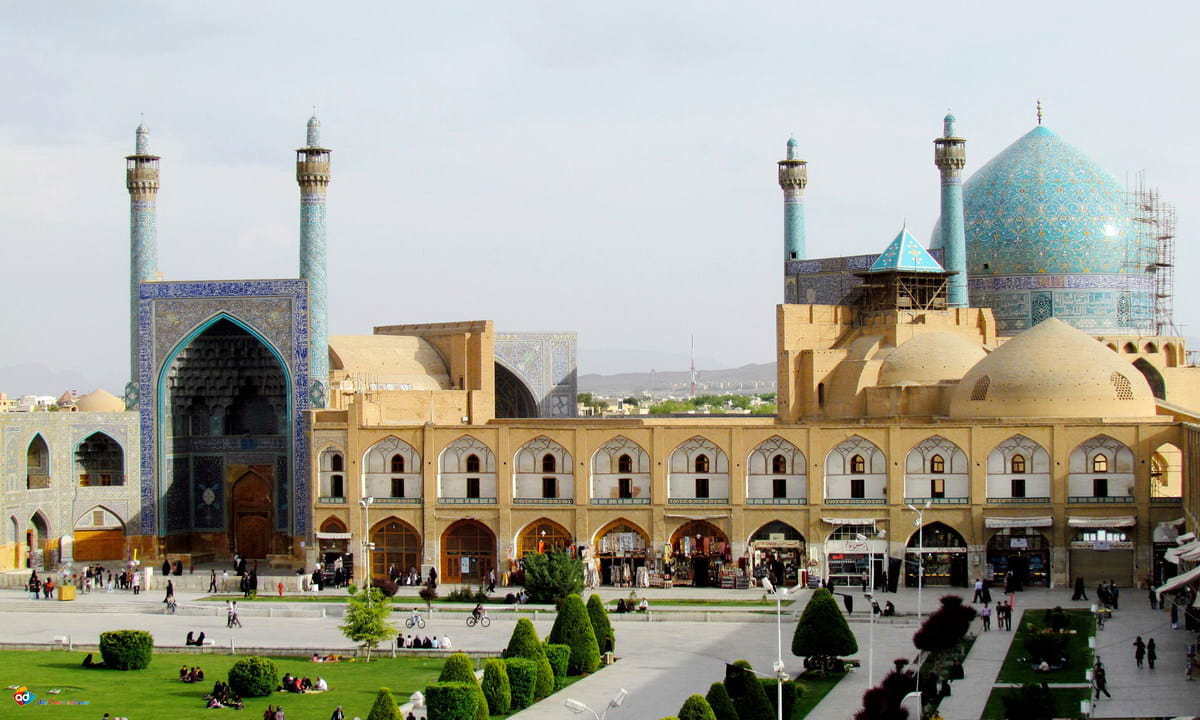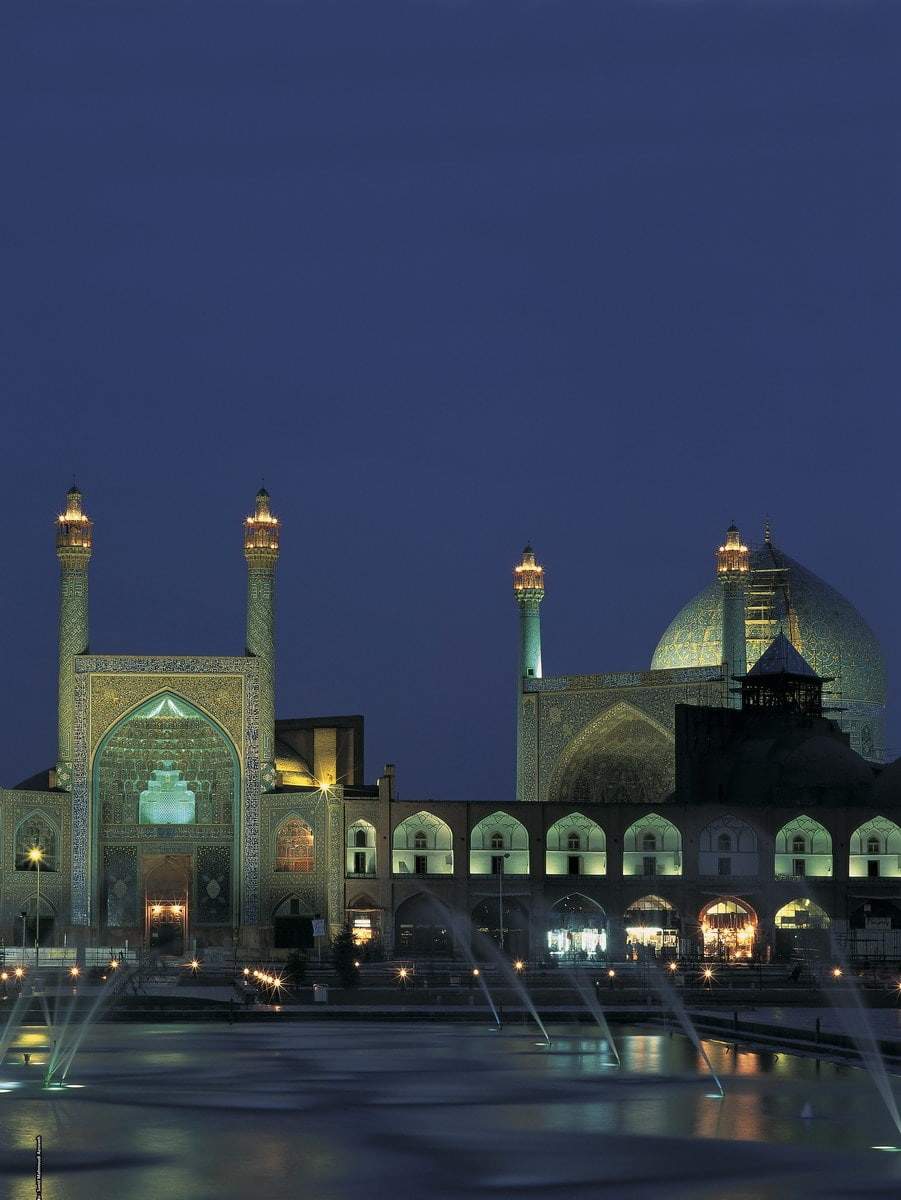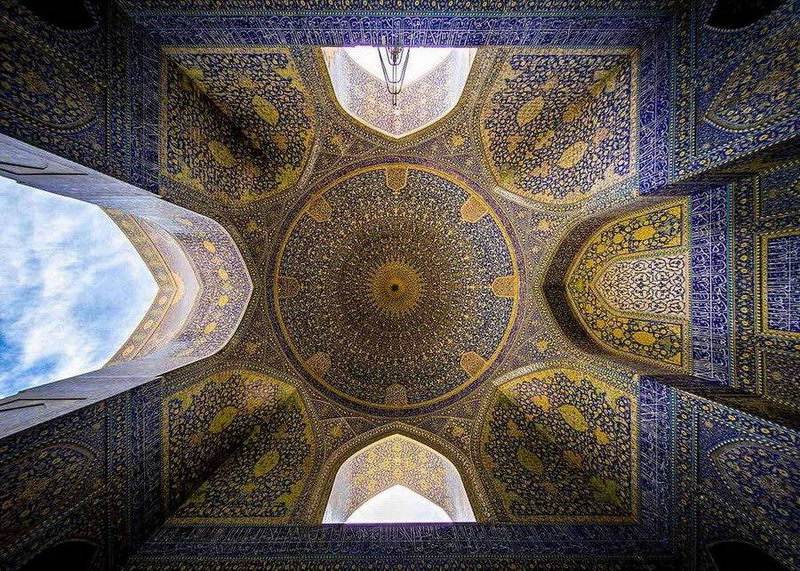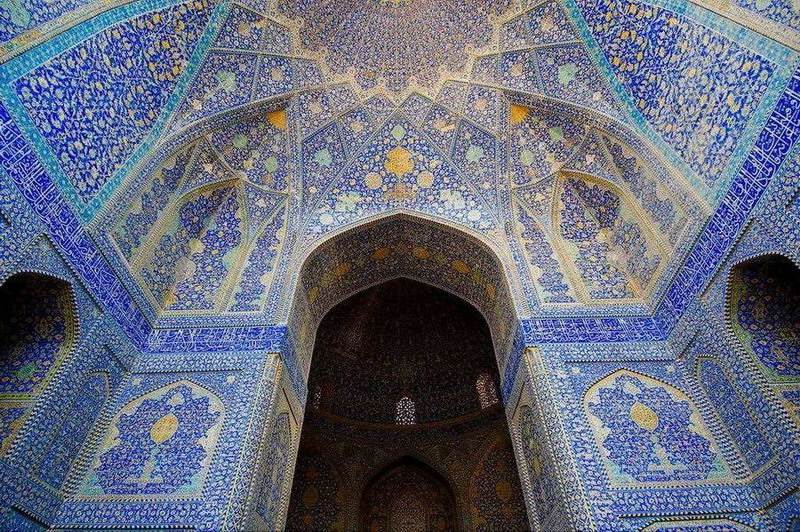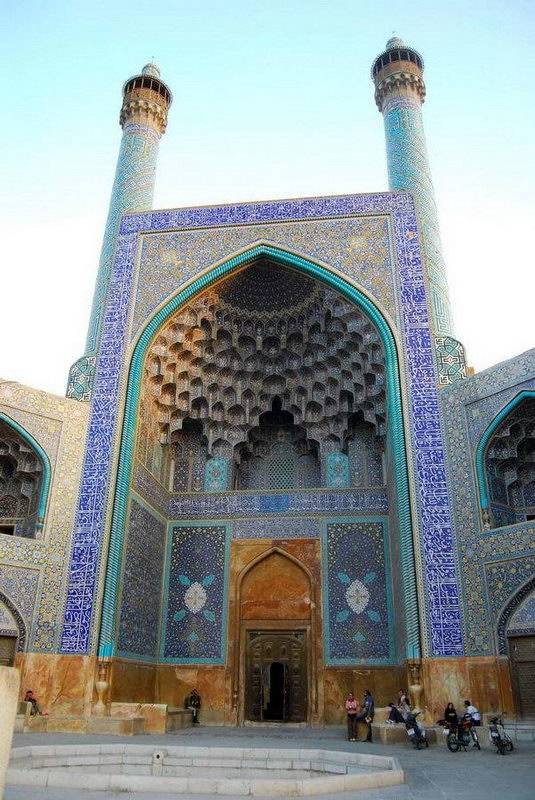Imam mosque
The Imam mosque, the most prestigious historic mosque in Esfahān, among the important buildings of Islamic architecture in Iran and known by other names such as: Mahdie mosque, Al-Mahdi mosque, Jâme 'Abbāsi mosque, Soltāni jadid mosque and mosque of the Shāh, is located on the south side of Imām square (Naqsh-e Jahān) in the city of Esfahan.
The construction of the mosque as an admirable masterpiece of architecture, majolica and stone work, in the era Safavid used as a public building for the people's use, started in the 1611 year and ended in the 1629.
The builders of the building had been chosen among the best architects, engineers, designers and artists of the time such as Reza Abbāsi, a well-known master of calligraphy and miniature and wise as Sheikh Bahāi, jurisperite and well-known mathematician of the Safavid period.
This impressive mosque with the architectural style of the school of Esfahān, has two shabestān (colonnaded prayer hall) analogous to the east and west of the courtyard, two madrasas to the south-west and southeast with the stone indicating the religious south (the hour of prayer), rooms for the accommodation of the students of theology, a covered iwān, a minbar (pulpit) carved into a single block of marble, numerous epigraphs and seven holy water stoups.
The large and sublime double-domed dome of the mosque measures 52 meters, the height of the minarets inside is 48 meters and the height of those of its portal in the Imam square is equal to 42 meters. Among the interesting aspects of Jāme 'mosque is the effect of the echo-due to the two dome shells and the 16 meter space between these two-in the middle of the great southern dome.
The magnificent portal of the mosque flanked by minarets and its other parts have been decorated with polychrome majolica of incomparable beauty with floral designs and birds.
Ultimately, the Imam mosque in Esfahān, with its magnificent minarets, the iwāns that stand out against the sky, the exemplary shabestān and the mihrāb (niches) finely worked even with a harmonious and well-balanced design, is undoubtedly among the unparalleled masterpieces of architecture of the Safavid period.
A mosque that in its time was among the wonders of the time and in truth for the beauty of the design, the grandeur, the solemn dimensions and the magnificence of its majolica, is the shining star of the Safavid period.
This building that has witnessed some historical events and has a royal harmony, along with the Naqsh-e Jahān square has been included in the UNESCO world heritage.


